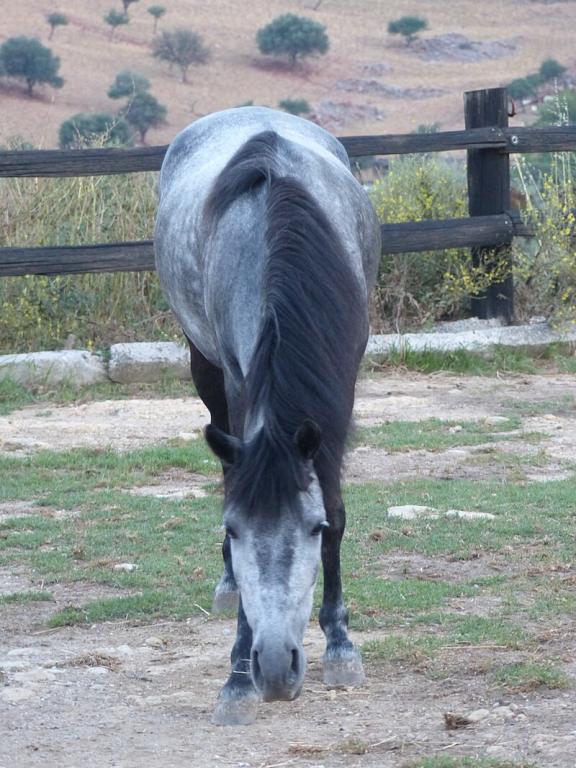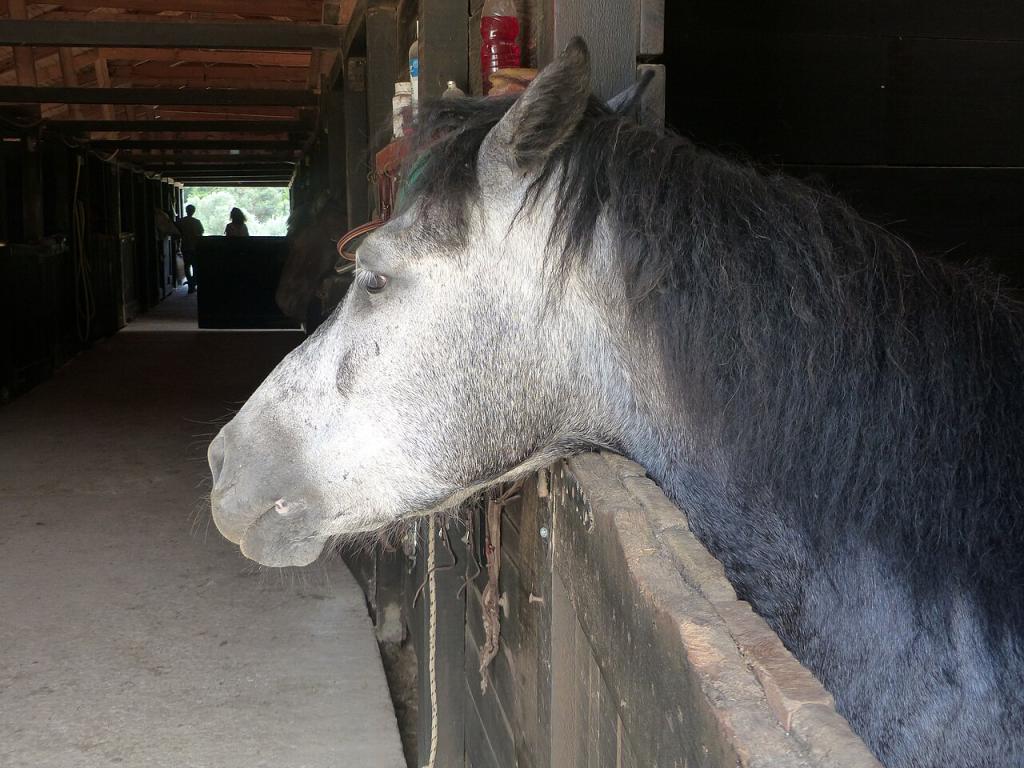
Continent: Europe
Country: Grèce
Weight: 350 – 450 kg
Height: 134 – 140 cm



The Cretan Horse, also called the Messara horse, originates from the Messara plain, in the south of the island of Crete, Greece.
In the 20th century, the population of Cretan horses declined sharply. To preserve this emblematic breed, an official stud-book was created in 1994, supported by the Aristotle University of Thessaloniki and the Association of Cretan Breeders.
The Cretan Horse is intimately linked to the Messara plain, located in the south of Crete. This fertile agricultural area has been the breed’s stronghold since Antiquity and remains its main breeding center today.
Beyond Messara, traditional breeding can also be found in other parts of the island:
The breed remains highly localized: there are very few individuals outside the island, as conservation efforts focus on maintaining a pure and controlled population in Crete. Unlike other Greek breeds (such as the Thessalian), the Cretan Horse has not experienced widespread international diffusion.
The Cretan Horse represents a very ancient equine lineage, directly linked to the horses of the Minoan civilization. Its genetics are a living testimony of Mediterranean history, and preserving it contributes to safeguarding a unique biological diversity.
One of its genetic particularities is the broken amble ("aravani"), a rare and desirable natural gait. This innate ability to produce a smooth and comfortable gait is a reproducible trait, valuable in breeding programs.
The Cretan Horse shows a remarkable resistance to heat, arid soils, and harsh conditions of the island of Crete. This genetic trait makes it a precious resource in selection programs seeking rustic, enduring, and frugal horses.
With its small numbers and restricted geographical distribution, the breed is classified as endangered. Its genetic importance lies not only in its own qualities but also in the need to maintain equine diversity worldwide, facing the standardization of modern sport breeds.
The Cretan Horse is one of the oldest equine breeds in Europe. Its origins trace back to the Minoan civilization (around 1700 BC), where it appears on frescoes, seals, and pottery found in the palaces of Knossos and Phaistos. These depictions already show slender horses, used for chariot races, war, and religious rituals.
Over the centuries, Crete had many exchanges with Asia Minor and the Mediterranean basin. The Cretan Horse thus incorporated Oriental inputs (likely Arabian or Anatolian), which enhanced its elegance and abilities. Its famous broken amble (aravani) may be a legacy of these influences.
During the Middle Ages, the horse remained indispensable for Cretan peasants in agricultural work and transport across the island’s rugged terrain. Under Venetian and later Ottoman rule, it continued to be bred locally, though somewhat marginalized compared to imported horses.
With mechanized agriculture and the introduction of larger foreign breeds, the population of Cretan Horses dramatically decreased during the 20th century. By the 1980s, only a few hundreds of individuals remained, often in isolated rural villages.
Facing extinction risk, a conservation program was launched in 1994, including the creation of an official stud-book. This initiative was carried out by the Aristotle University of Thessaloniki and the Association of Cretan Breeders, with the aim of recording, selecting, and preserving authentic lineages.
The Cretan Horse is renowned for its calm and balanced character. Close to humans, it has long been a daily work companion in Cretan villages. This intimacy has given it great docility, while retaining a certain liveliness of spirit.
It is an enduring and lively horse, capable of covering long distances in Crete’s mountainous terrain. Its major asset is its natural amble (aravani), a smooth and steady four-beat gait that offers exceptional comfort to the rider.
Rustic and accustomed to sober living conditions, the Cretan Horse integrates well into a herd. It keeps a degree of independence but remains sociable with its peers.
Thanks to its robustness and adaptation to harsh conditions, it can live long lives and remain useful for many years, even with modest care.
The Cretan Horse is among the threatened equine breeds, with very limited numbers. The priority remains genetic conservation, through the stud-book created in 1994 and monitoring programs led by the Aristotle University of Thessaloniki in collaboration with local breeders.
Thanks to its unique gait (aravani) and its direct connection to Minoan civilization, the Cretan Horse has strong cultural and touristic potential. In Crete, it is already part of traditional festivities and equestrian tourism, especially for mountain and coastal rides. This potential could be further developed to give the breed greater visibility.
Beyond its heritage role, the breed could be further promoted in:
To ensure its future, the breed must gain visibility beyond Crete. Participation in international exhibitions, wider stud-book communication, and possible partnerships with other Mediterranean countries are essential to avoid isolation and ensure its long-term survival.
The Cretan Horse is known for its natural hardiness. Adapted to rugged terrain and the hot, dry climate of Crete, it shows good resistance to common diseases and a high adaptability to frugal living conditions.
Overall, the breed is not known for hereditary defects or for particular predispositions to serious illnesses. Its long natural selection in a demanding insular environment has favored healthy and solid individuals.
When well cared for, the Cretan Horse can enjoy a long lifespan, remaining active at advanced age, thanks to its frugal diet and easy maintenance.
A natural four-beat lateral gait, smooth and regular, positioned between the walk and the trot.
It maintains an average speed of 10–15 km/h (up to 18 km/h in trained horses) and provides exceptional comfort thanks to the absence of vertical bounce.
The horse moves with steady impulsion, supple shoulder action, and a nearly horizontal topline.